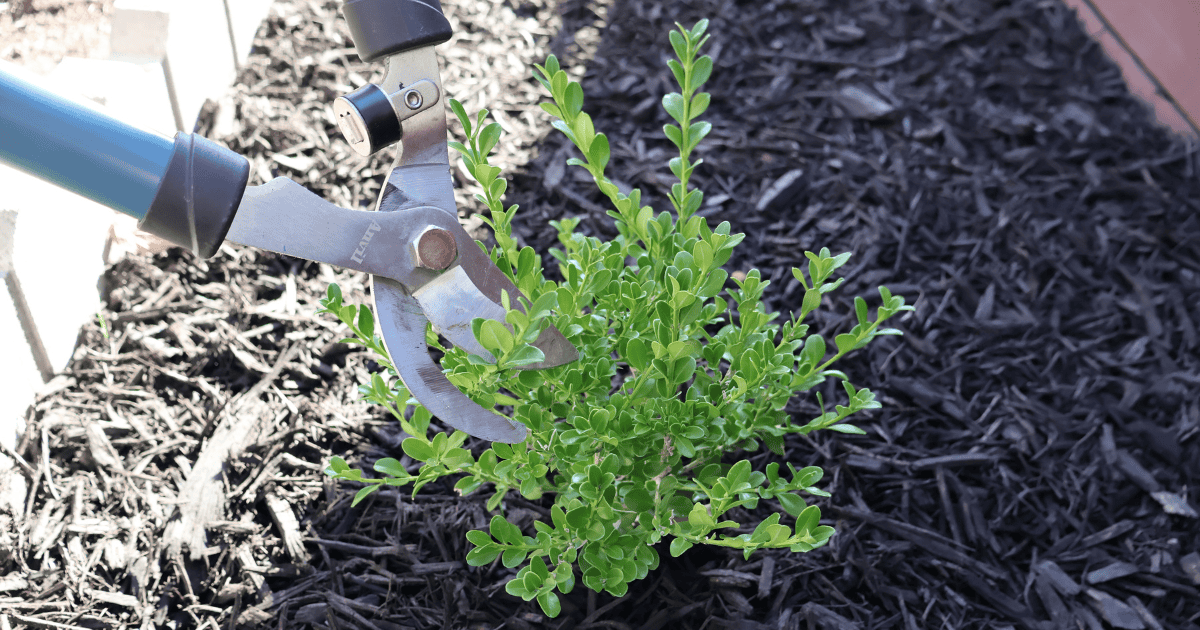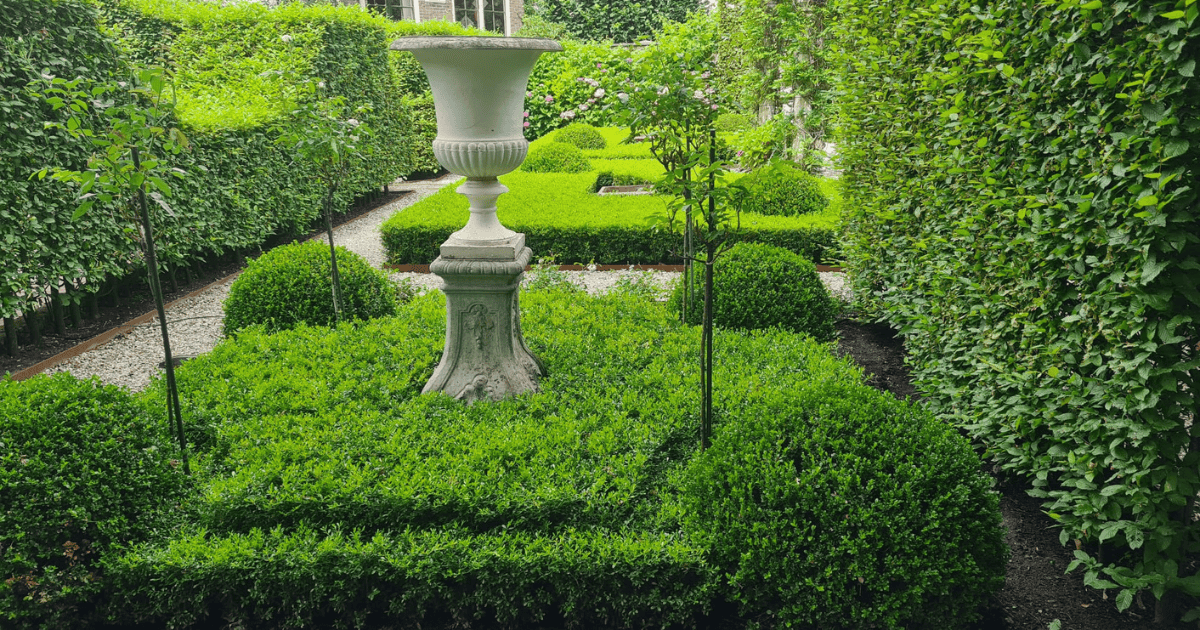
When it comes to maintaining the perfect shape and health of your boxwoods, knowing the right pruning techniques is key. Whether you're aiming for a crisp, formal hedge, a natural, airy look, or something in between, understanding the nuances of pruning, shearing, and thinning will help you achieve your garden goals. We’ll walk you through each of these essential pruning styles, offering tips and tricks to keep your Better Boxwoods looking their best all year round. Let’s dive in and get those garden shears ready!
Shearing Versus Pruning
Two very different types of pruning techniques are commonly used to maintain boxwoods: pruning and shearing. Most boxwood shrubs can be maintained through light annual pruning to thin the canopy. Thinning involves removing select branches to increase light penetration and airflow to interior branches, which promotes healthier plant growth and a dense, full canopy. This type of pruning maintains the boxwood variety’s natural shape and can be used to keep plants at a desired size. Thinning is the preferred method of pruning boxwood plants.
In the past, boxwoods were commonly maintained through heavy shearing to tame and shape them. Shearing was used to increase compactness or to maintain a specified size or shape. With today’s compact and dwarf boxwood cultivars, shearing to promote a compact form is no longer necessary, but shearing is still used for shaping topiaries and maintaining parterres, boxwood hedges, and clipped borders.
Shearing is the uniform removal of the outer foliage. It is important to note that continuous shearing causes a thick outer shell of foliage that shades the interior branches. Under continuous shade, these inner branches drop their foliage, creating a plant with just a thin, dense outer layer of leaves. The dense outer canopy also creates an environment that allows disease organisms to thrive. For this reason, shearing should be paired with annual thinning to maintain a healthier plant canopy.
How to Thin Boxwood Plants
Compact varieties and those maintained in their natural form typically require little pruning aside from thinning. Thin plants by removing some of the oldest branches to create small pockets or openings in the canopy. Use hand pruners or loppers to cut selected branches back to a lateral branch. While you are working, remove any foliage and debris that has been collected among the boxwood branches inside the canopy.
Faster-growing varieties may require a bit of shaping to remove stray branches and reestablish their form. Envision the natural shape and selectively trim out-of-place branches. Cut these back just inside the plant canopy to hide the stub. It is best to be slow and deliberate when pruning. Step back from the plant frequently to look at the overall shape and identify individual branches that need to be removed. Don’t remove too many branches at once without rechecking the overall shape and appearance.
Disinfect pruning equipment before and after pruning boxwoods. This prevents the spread of plant diseases on tools. Make sure your tools are sharp before pruning. Sharp tools make cleaner cuts that seal better following pruning.
Shearing Boxwoods into Formal Shapes and Hedges
Shaping boxwood plants into topiaries, hedges, knot gardens, and borders requires patience and persistence. In addition to shaping plants, shearing encourages stems to branch at their tips, resulting in a dense outer canopy. This creates the uniform appearance of these plantings and is also why shearing should be paired with annual thinning. Hand shears provide more control for shaping plants than powered hedge trimmers, save those for large hedges.
To obtain the desired shape, boxwoods need to be sheared after each flush of growth during the first few years after planting. This encourages the branching necessary to achieve the desired shape. Begin pruning after the first flush of spring growth. Don’t remove all the new growth as you trim. As you establish the topiary form, you may need to prune again in summer after a second flush of growth. Be conservative as you make cuts, you can always take off more, but you can’t put the foliage back.
After the first few seasons or once the form is well established, begin thinning boxwood hedges and topiaries annually to open the canopy and only shear after the initial spring flush of growth to maintain their form. Do not trim back farther than the previous pruning cuts.



